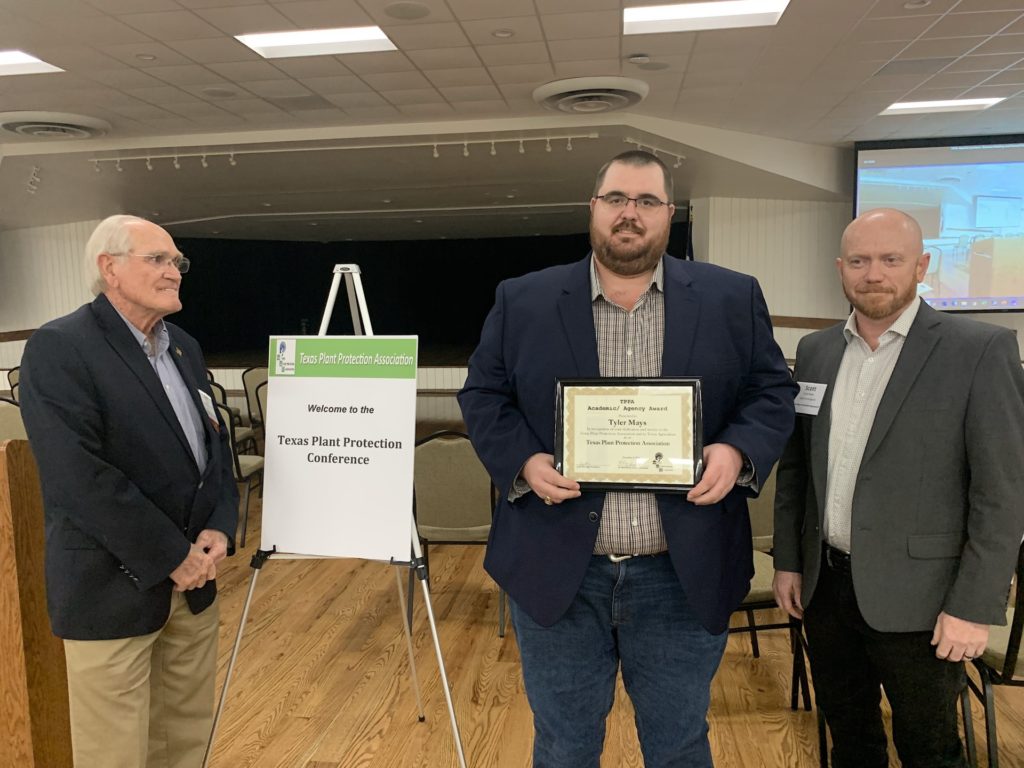Production agriculture, plant protection focus of AgriLife Research innovation
Food sustainability, health and wellness emphasized
Texas A&M AgriLife Research continues to power forward with investments to ensure future scientific discovery and innovation in production agriculture and plant protection meet the needs of consumers.

That was the message Henry Fadamiro, Ph.D., AgriLife Research associate director and chief scientific officer, gave during an overview of research funding and programming before 250 attendees at the recent 33rd Texas Plant Protection Association Conference in Bryan.
“AgriLife Research continues to prioritize and invest in production agriculture and plant protection,” Fadamiro said. “The agency is making impactful contributions to the issues of food sustainability both in Texas and across the nation.”
AgriLife Research leads all agricultural research programs across the nation with $280 million in research expenditures and $125.9 million in awards for 2021. Production agriculture, encompassing farms, ranches and fisheries, continues to be the key area of focus, along with scientific discovery and emerging technologies.
In addition to Fadamiro outlining highlights of research during the annual conference, a number of awards were presented to faculty and students, as well as industry representatives, for their ongoing research in the area of plant protection.
Ongoing research, facility improvements
Environmental and economic sustainability and health and wellness are other avenues, he said. Recent Legislative exceptional item funding was awarded to research on insect-vectored diseases, invasive ants, and vegetable and fruit improvement
“We are in the process of renovating the plant growth facility in the Southern Crop Improvement Annex, which includes 20,000 sq. ft. of greenhouse space, 19 units of plant growth chambers, eight units of walk-in growth chambers and three with CO2 chambers,” Fadamiro said.
He said the Automated Precision Phenotyping Greenhouse is scheduled for substantial completion this month and will provide access to state-of-the-art robotics-driven greenhouse space, as well as capabilities for bio-photonics research.
“The facility will be expected to operate on a cost recovery model. We are also in the process of establishing a gene editing facility,” Fadamiro said.
The agency is also preparing for the new Institute for Agriculture and Health, funded by a $20 million annually from the U.S. Department of Agriculture–Agricultural Research Service. Key research programs and next-generation methodologies for environment, economics and nutrition will be focus areas.
Core facilities; automated phenotype facility
Fadamiro said Texas A&M AgriLife is also making plans to provide a suite of research services to core faculty and scientists not accessible within Texas A&M AgriLife or The Texas A&M University System.
“They will also be available to external groups with faculty research receiving priority,” he said.
Revenues will be generated from sales, services and sponsored research projects. Core facilities include the Texas Genomics and Bioinformatic Services, Texas Institute for Genomic Medicine, Plant Growth and Phenotyping Facility, and a new Agriculture Improvement Core Facility.
By bringing these services together, the core facilities provide a more strategic approach to basic and applied genomics research results and services for current and future solutions for plant, animal, human health and nutrition.
“AgriLife Research continues to prioritize and invest in production agriculture and plant protection,” Fadamiro said. “Our outstanding faculty and staff are making impactful contributions to issues of food security, plant protection and environmental sustainability.”
Texas Plant Protection Association awards
Several awards were presented during the Texas Plant Protection Association business and awards luncheon, including:

— Academic/Agency: Tyler Mays, Texas A&M AgriLife Extension Service integrated pest management agent, Hill County.
— Industry Award: Bobby De Leon, division sales manager director, Riviulis Irrigation.
— Consultant Award: Clyde Crumley, Gulf Coast area crop consultant.
— Pest Identification Contest: Webb Wallace, Harlingen crop consultant, first place; Dale Mott, AgriLife Extension program specialist, College Station, second place; Mays, third place.
— Norman Borlaug Lifetime Achievement Award: Tony Driver, Syngenta Crop Protection.
Student Poster Awards were presented in both the doctoral and masters categories. All student recipients are from Texas A&M University.
Doctoral category:
- First place: Brady Arthur, Evaluation of ThyvOn Cotton as a Control Method of Thrips spp. and the Cotton Fleahoppers.
- Second Place: Zachary Howard, Smutgrass Response to Late Summer Applications of Photosynthesis and Pigment Inhibiting Herbicides.
- Third place: Bishwa Sapkota, Evaluating Cross-Applicability of Weed Detection Models in Different Crop-Weed Environments.
Master’s category:
- First place: Danielle Gray, Evaluating Pyrethroid Resistance in Oebalus pugnax (F.) in the Texas Coastal Bend.
- Second place: Ubaldo Torres, Site-Specific Treatment of Late-Season Weed Escapes in Cotton using an RTK-GPS Guided Remotely Piloted Aerial Application System.
- Third place: Regina Hernandez, The Occurrence of Diverse Virus Species in Texas Cucurbit Fields as Determined by Metagenomic Analysis.


